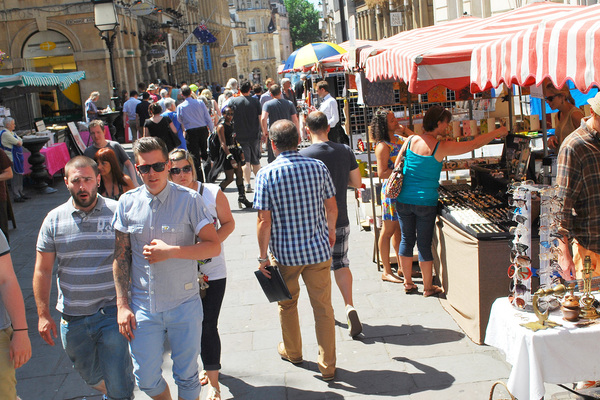Candidate: St Nicholas Market
Location: Bristol, UK
Category: The Great Place Award
Year: 2014
Learning Moments
1. Market hours
The nature of markets is their daily cycle of bursting activity then quiet and closure. This makes them difficult to integrate into the evening economy.
2. A city in quarters
St Nick’s Market is literally one quarter of the city cross, thereby carrying an important role in the function and use of the city centre. The other two crosses comprise civic/legal and city retail, with the fourth quarter bombed but now awaiting a new vision for its future.
3. Market dynamics
The stock of old and specialist buildings has withstood commercial pressures because of the active market but higher value uses are needed now to underwrite restoration costs.
4. Market management
As demonstrated at St Nick’s, with many small traders there needs to be strong management to keep standards high.
5. Streets not malls
The diversity of the lanes, topography and buildings are the fragile charm of St Nick’s and it is the essential foil to the retail centres close by.
Assessment Summary
St. Nick’s is certainly a very attractive place formed of one quarter of the medieval heart of the city. It is steeped in history and contains a collection of exceptional, possibly unique, old buildings spanning in age over five hundred years. It is a pleasant place to be and has a distinct character.
We listened to a fascinating presentation from the city archaeologist who explained the history of the site from the 10th century onwards and set the historic context for what we see today. The city places great emphasis on the historic importance of the market and the consequent attractiveness to visitors.
The market was definitely bustling around lunch time on a Thursday and probably at its best at this time of day. Everything was open and the local business community mixed with shoppers and tourists to create the mix we all hope for in these circumstances. To what extent the market works as well in response to the evening economy is debateable. When the business community is absent and the market itself is closed it has a very different and less attractive atmosphere.
There is a very clear and diligent management regime in place and as far as we could see all the spaces in the market are let. There is, as far as practicable, a mix of traders, but in the end the Guildhall environment and the arrangement of stalls suit a certain type of retail. The management does its best to generate an interesting combination of small goods and food offerings typical of this type of market. The resultant mix, however, appears to a great extent self selective and it was difficult to detect an ethos or overriding principle behind the management of the place and little stakeholder engagement with the project.
The inherent qualities of the space, however, are beginning to attract new investment from a high end boutique hotel being developed in the adjacent street to Brooks Guest House in the heart of the market. These interventions will hopefully change for the better the ecology of the public realm into the evening and night time economy.
There has been little investment so far in refurbishing the buildings or improving or enhancing the surfaces or lighting of the streets and alley ways. But there is some terrific material surviving in the form of paving and cast iron kerbs and features such as the nails which give the place great texture and character.
Overall the assessment team were impressed. The area has a strong sense of being different from its surroundings both in physical form and activity and so qualifies well as a place. Its trading history is important and appropriately appreciated and interpreted without preciousness or the suppression of new activity. It will be interesting to see to what extent the success of the market in bringing people into the heart of the old city can influence or catalyse the development of the missing South East quadrant.









